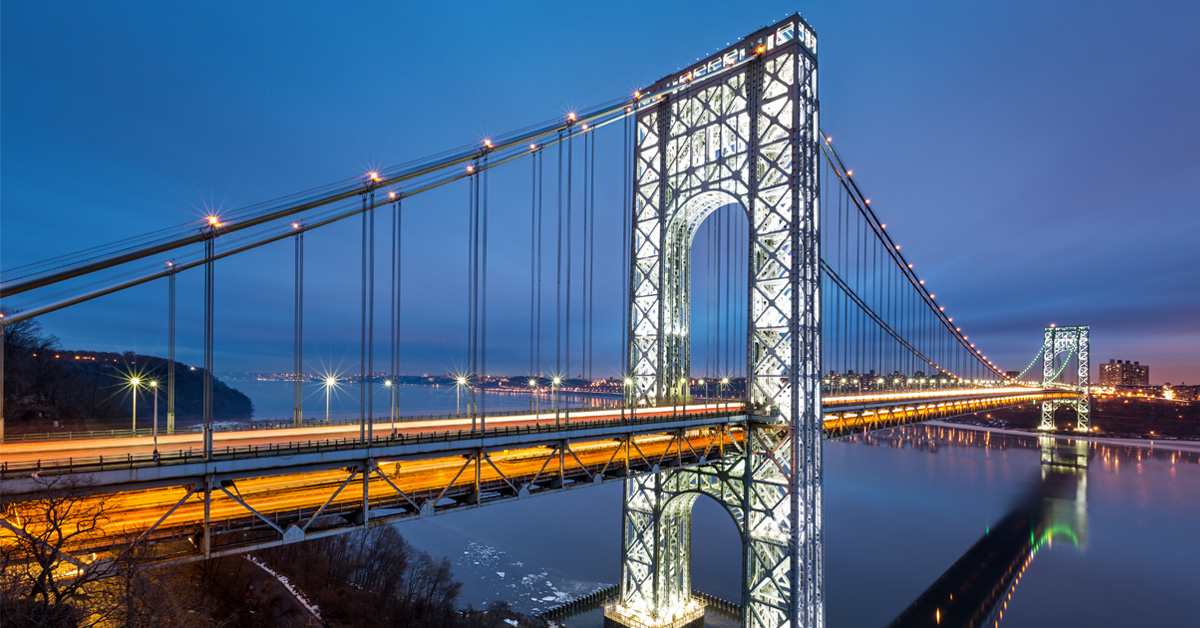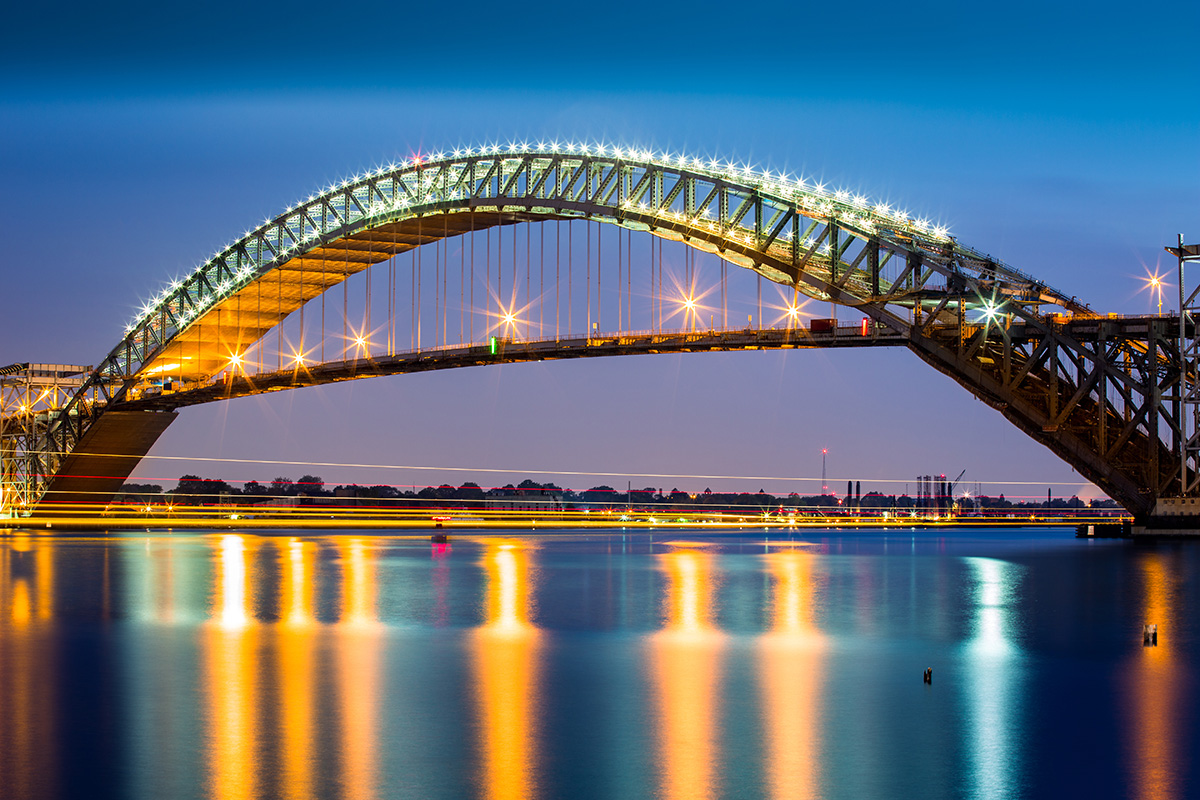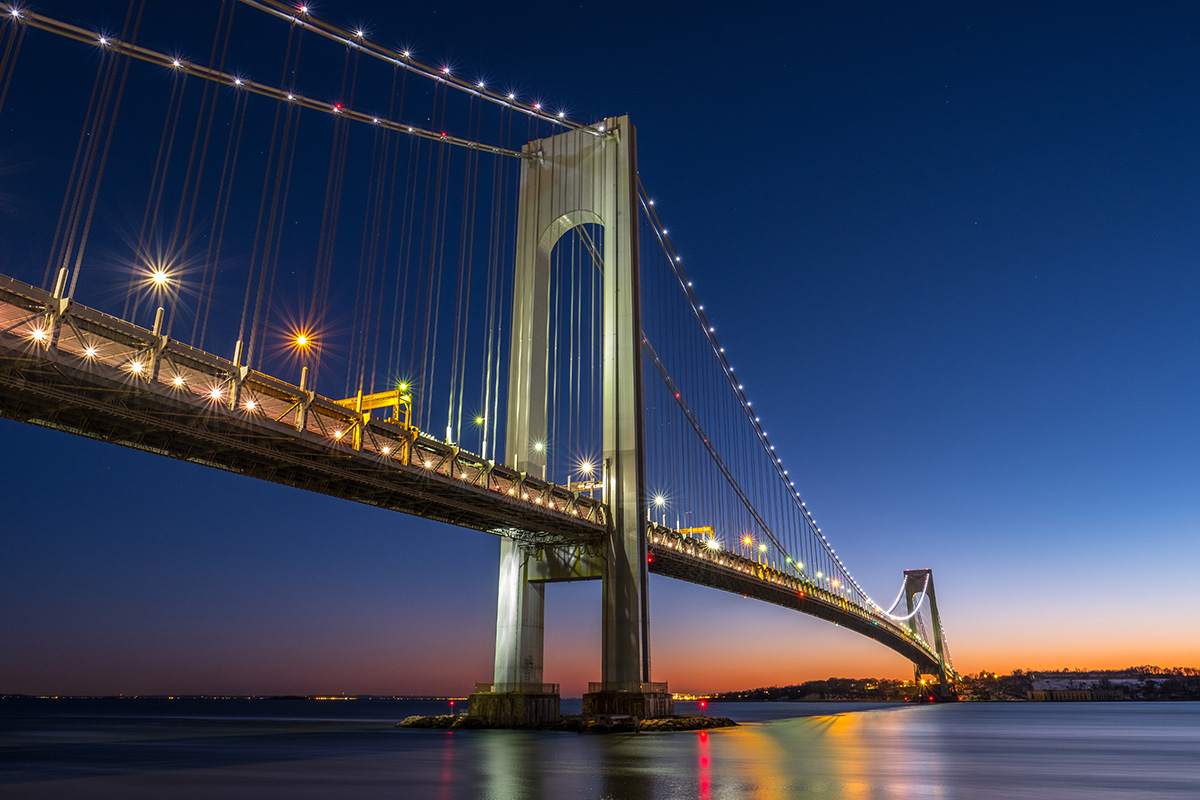 George Washington Bridge, New York City, USA. Photo © Mandritoiu / ShutterStock
George Washington Bridge, New York City, USA. Photo © Mandritoiu / ShutterStock .
As the engineer of six major bridges in New York City, Swiss-American engineer Othmar Ammann (1879-1965) made a lasting contribution to the urban landscape. With the recent repurposing of his Bayonne span to allow clearance for larger ships, we’re considering how his work reflected a shift to a modern aesthetic in public projects.
Even before he became a prominent bridge engineer, Ammann was aware that his profession came with substantial risk—especially when pushing the envelope of steel suspension bridges. He established his reputation with an influential technical analysis of the 1907 collapse of the Quebec Bridge, a disaster that killed 75 people. But he also took a stand on the aesthetic dimension of bridge design, commenting in a 1964 New York Times interview that bridges should be beautiful and that “scientific and economic expediency cannot justify incongruous forms.”
Yet economic expediency played a major role in the as-built condition of his most prominent work, the George Washington Bridge, the longest suspension bridge in the world when it opened in 1931. With a main span is 1,067 meters and a total length is 1,450 meters, the massive bridge spans the Hudson River to connect Manhattan with New Jersey. Ammann, the Port Authority’s chief bridge engineer, faced formidable design challenges from the inception of the project in 1925. Beyond the burden of planning such a daunting span, details like the anchorages for the massive cables opened new frontiers of engineering. But while Ammann and his architectural partner, Cass Gilbert, planned granite facing for the bridge’s two 184-meter-tall towers, the bridge’s design board nixed the stone cladding to save money.
Ammann and Gilbert’s reasons for specifying the stone were largely aesthetic: to echo the natural outcroppings of the site and to disguise the structural steel with classically-inspired styling. In stripping the towers of their Beaux-Arts trappings, the bridge committee indirectly took a stand for modernism, letting the load-bearing lattice speak for itself. As a prominent new gateway to the city, the George Washington Bridge became a harbinger of the functionally driven architecture that would emerge in the post-War period.

The Bayonne Bridge, New York City, USA. Photo © Mandritoiu / ShutterStock
Ammann’s Bayonne Bridge stands at the other end of New York City, connecting Staten Island to New Jersey. Unclad steel prevailed in that arched design as well. But by the early 2000s, the bridge was in danger of being made obsolete by the advent of huge Panamax-class cargo ships, which could not pass underneath. Thankfully, the authorities came up with a plan to alter the bridge rather than scrap Ammann’s iconic 510-meter arch — a sign that his desire to create beautiful as well as functional structures was successful. Starting in 2013, the bridge was strengthened and the roadway was raised 64 feet, passing through a higher aperture of the original arch’s landmark structure.

The Verrazano Narrows Bridge, Brooklyn, USA. Photo © Quietbits / ShutterStock
Though driven in part by undeniable economic factors, the evolution of Ammann’s bridge designs illustrates the fusion of form and function in midcentury public projects. As Le Corbusier put it, with respect to the George Washington bridge, “finally, steel architecture seems to laugh.”







